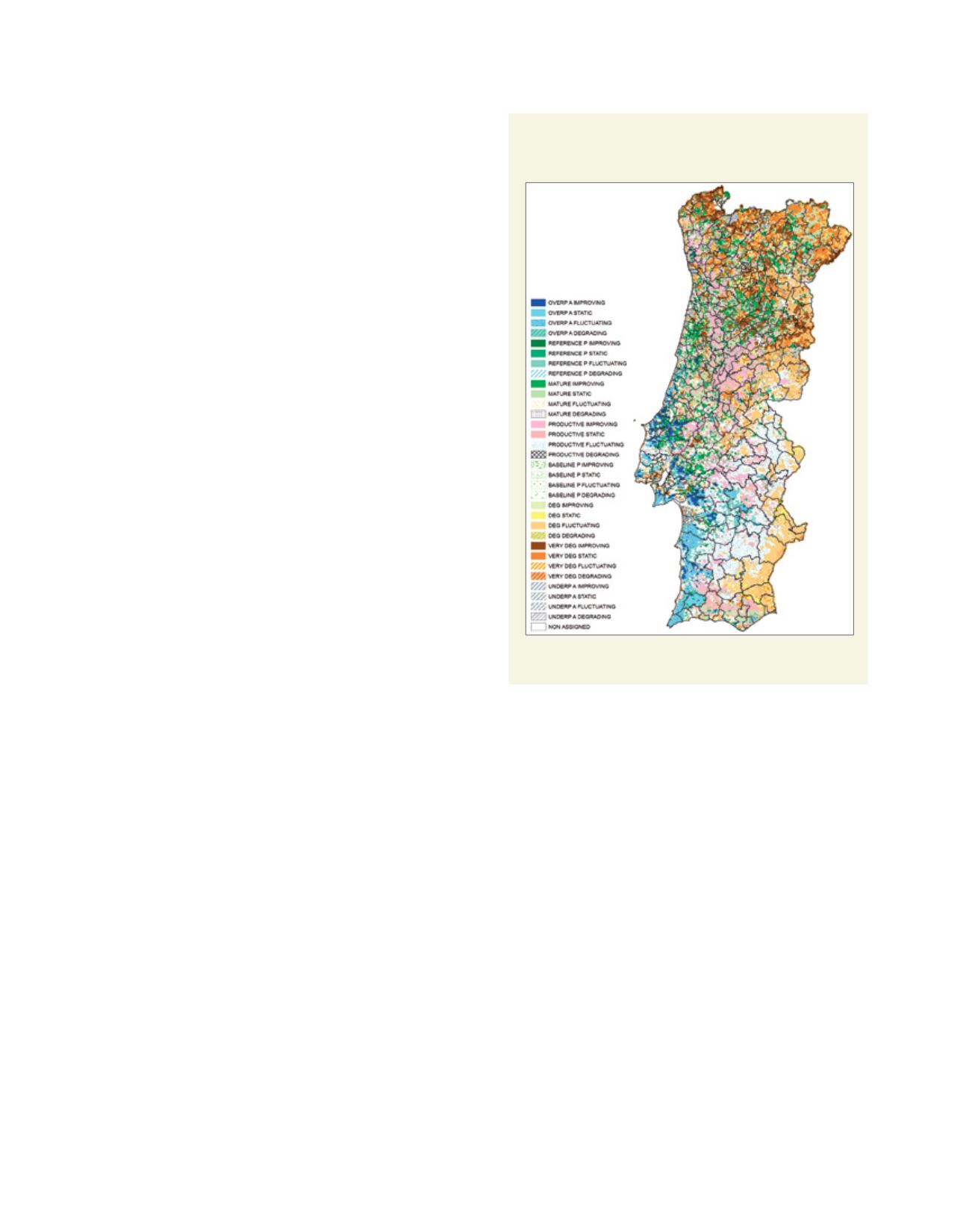

[
] 62
Encouragement and support for environmental restoration
and landscape rehabilitation in land affected by desertifi-
cation and/or with degraded soils focuses on several areas.
These include areas that are affected by uncontrolled rural
fires including forest fires; land where soil has been degraded
by overexploitation, particularly areas with misfit herds of
cattle; land with woody invasive alien formations; land with
inert extraction areas; and all other land affected by erosion,
saline influence or that is degraded overall.
The promotion and development of sustainable production
methods and certified management takes into account soil
conservation. This includes:
• efforts to promote the application of best practices in land
use and soil conservation (such as minimal mobilizations,
direct sowing, minimum anchor between rows and cover,
and crop rotation)
• integration of production, organic farming and extensive
grazing
• application of cross-compliance standards, specific
environment commitments for agriculture and forest,
and restrictions in vulnerable areas (such as nitrates-
vulnerable zones)
• maintenance or increase of organic matter levels and soil
biodiversity.
Other interventions that promote climate change mitigation
include activities that help to reduce emissions and increase
sinks (such as the management of livestock effluents through
energy recovery; increased carbon sequestration in agricultural
soils by direct sowing and installation of permanent improved
and biodiverse pasture; increase in forest carbon sequestration
through improved forest management and afforestation of new
areas). These interventions also include getting to know, recog-
nize and develop other technologies, practices and processes to
reduce emissions or increase carbon sinks in a rural context.
Interventions aimed at adaptation to climate change include the
development of activities that improve the resilience of agricultural
and forestry systems. These focus on the knowledge of species
and adapted crops; the relationship between activities and their
exposure to climatic effects; technologies, practices and processes
that increase resilience and their respective application; recovery of
native species for priority use, including xerophytics for the estab-
lishment of improved pastures and trees and/or shrubs formations;
and the adaptation and fitting test of non-autochthones xerophyt-
ics Mediterranean species where and when suitable.
On the other hand, PANCD 2014 considers two networks as
basic structures for the monitoring and evaluation of the differ-
ent action lines. The Pilot Areas to Combat Desertification
network should include administrative units defined as priori-
ties for interventions. The Thematic Reference Centres in
Combating Desertification network will encompass manage-
ment units for the study, development, demonstration and
expanse of actions and good practices to combat desertifica-
tion, land degradation and drought, and must be in possession
of a specific measurement infrastructure for the subjects to be
evaluated. These networks should eventually be integrated in
other equivalent Iberian and Mediterranean networks.
It is also important to consider the Dryland Champions
Programme created by the UNCCD in 2013 to recognize and
relieve projects, initiatives and activities of individuals and/
or organizations that promote or develop, at national or local
level, useful contributions for sustainable management in arid
regions and systems.
As a result, every year since 2013 Portugal has submitted to
the UNCCD Secretariat a list of the organizations and individuals
awarded as Dryland Champions. So far it has distinguished 27
entities with interventions not only in different regions affected by
desertification in the country, but also with cooperation projects
in arid areas of other Portuguese-speaking countries. Among the
distinguished Portuguese Dryland Champions are representatives
of different organizations working for local or cooperative develop-
ment of the environment, farmers, forestry and indigenous breed
producers’ associations, scientists, technologists, public adminis-
tration, companies and financial institutions.
The establishment of local pilot areas to combat desertifica-
tion in the affected regions was considered essential for the
systematization of effective solutions to mitigate and combat
this phenomenon by sharing experiences and informa-
tion. However all the entities named as Dryland Champions
in Portugal represent, individually and as a whole, a very
important component of the National Reference Network for
combating desertification, because they have been selected as
an example for national or global relief.
The Land Degradation Index for continental
Portugal, 2000-2010
Source: Gabriel del Barrio et al, 2011
L
iving
L
and
















